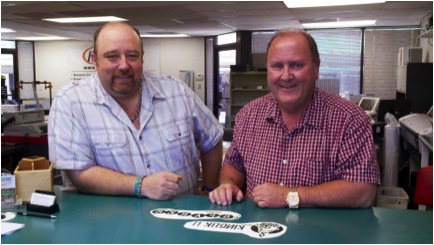In her book, The Give-Back Solution: Create a Better World with Your Time, Talents and Travel, author Susan Skog outlines several ways that volunteering is beneficial not only to the recipients of the service, but also to those who perform it. The benefits include an overall boost in feelings of joy and happiness, a heightened clarity regarding one’s own calling, sharpened skills and improved job performance, an increased ability to maintain a hopeful and optimistic attitude, and gaining an appreciation for other people and places. As a company, and as individuals, Kinetik I.T. and its employees are dedicated to helping others in the community and around the world.

In addition to operating in an as eco-friendly manner as possible and regularly making charitable donations to hand-picked causes, Kinetik I.T.’s employees also volunteer on their own time—sometimes finding ways to involve co-workers and partners. Kinetik I.T. Web Designer & Content Specialist Vickie Florschuetz has been a Big Sister volunteer with Big Brothers Big Sisters since last year.

For more than 100 years, Big Brothers Big Sisters has operated under the belief that inherent in every child is the ability to succeed and thrive in life. As the nation’s largest donor and volunteer supported mentoring network, Big Brothers Big Sisters makes meaningful, monitored matches between adult volunteers (“Bigs”) and children (“Littles”), ages 6 through 18, in communities across the country, by developing positive relationships that have a direct and lasting effect on the lives of young people.
On June 7, 2014, Vickie, along with co-workers and partner organization IMP of Central Phoenix participated in a nation-wide fundraising event for BB/BS at the AMF Tempe Village Lanes, as part of a fundraiser for the national organization. With bowling tournaments happening simultaneously across the country, the annual event raises approximately $20 million a year, with 100% dedicated to benefiting program services. Kinetik I.T. with IMP owner, Jim McPhetres, and Manager, Tim Earick supported the local division BB/BS of Arizona. With a bit of friendly competition between Team Kinetik I.T. and Team Sparks (named in honor of Vickie’s little sister), a total of 17 people attended and raised over $1000.
Kinetik I.T. is especially grateful for the support of IMP of Central Phoenix, who, when it comes to business communications services, can do it all. With a complete range of products and services available, IMP helps customers deliver their message to customers, employees and vendors alike. Using the latest printing and document management technology, IMP handles projects from start to finish, with an energetic and experienced staff, all dedicated to delivering the best products and services.
To learn more about services and products, and to stay up to date with Kinetik IT, visit www.Kinetik-IT.com or follow Kinetik on Facebook, LinkedIn or Twitter.